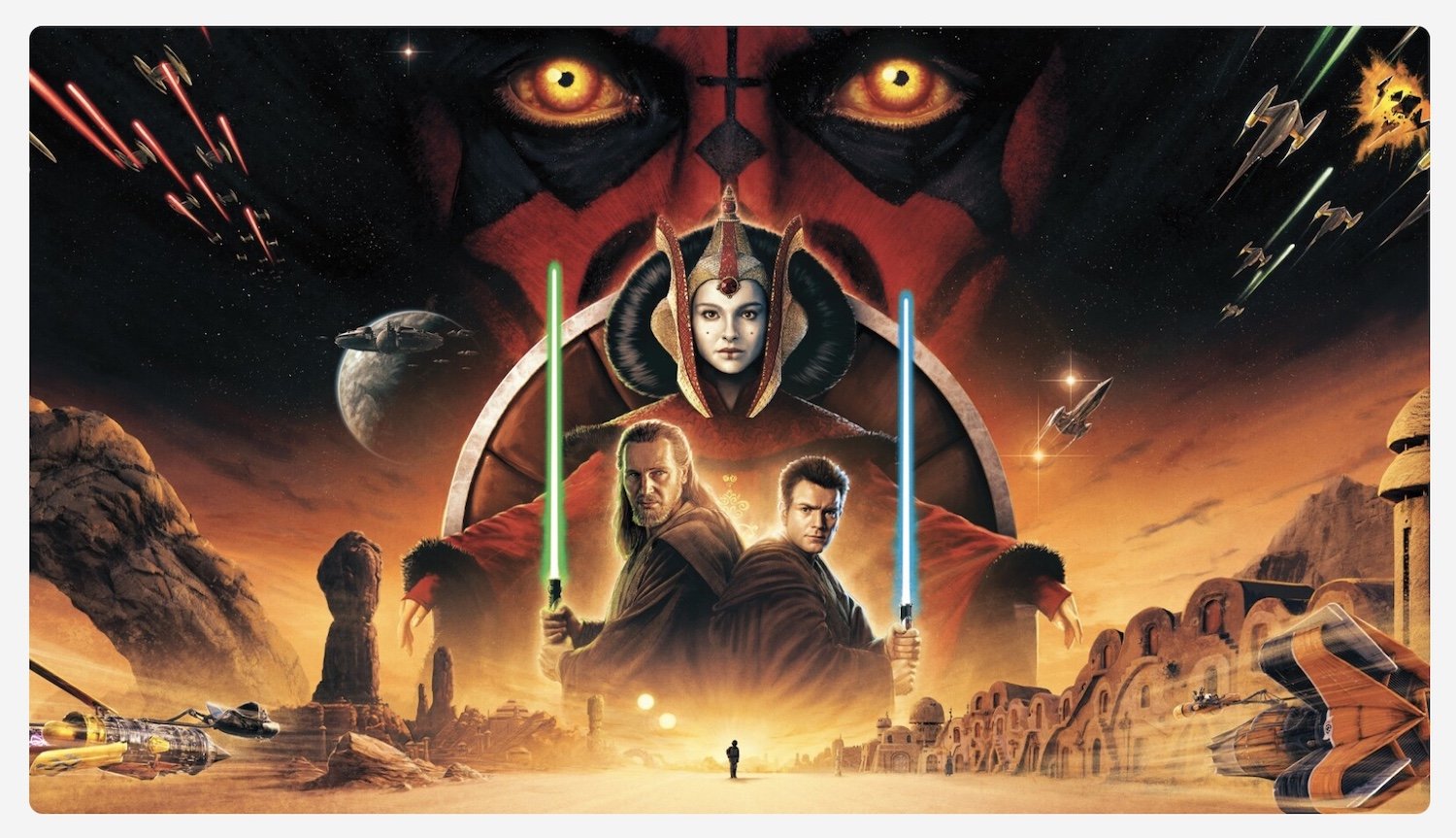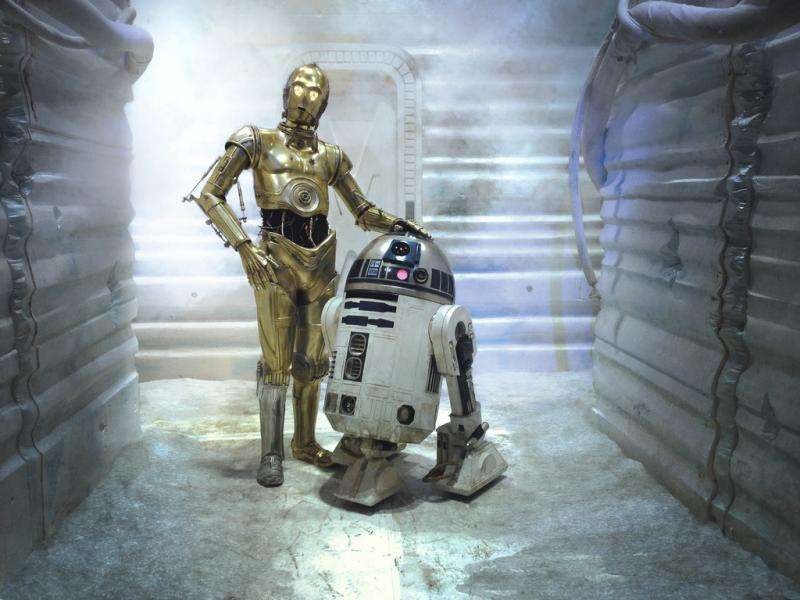I Always Liked Jar Jar Binks ✨
My brother and I were obsessed with the original Star Wars trilogy (IV, V, VI) from a very early age. And I do mean obsessed; after countless viewings (though we set a crazy goal one year, and did count) we both could have recited all three movies from memory well into our teens.
A long time ago, in a… well, you know the rest. (Image: Wookieepedia)
The fact that they were episodes four, five and six was part of the expansive feeling of a fully imagined universe: I mean, come on. We’re acknowledging that we’re starting four stories in! Talk about mysterious and exciting, with an echo of real history…
The franchise has all the hallmarks of classic, epic storytelling: an intergenerational saga centred around a dysfunctional family, hidden identities, a coherent moral core (it’s a lengthy meditation on good and evil, love and death, the usual), radical plot twists that play on our inherited assumptions (Yoda’s other hope!), a sprawling world/galaxy to explore, funny jokes… plus, laser swords. And interplanetary travel. And the perfect John Williams soundtrack.
What more could you ask for?
They were also, folks, movies for kids. They were rated PG.
Both my brother and I enjoyed Episode I: The Phantom Menace, which came out sixteen years after the conclusion of the first trilogy – and objectively, it’s the best of the three “new” episodes, which falter thereafter.
But who’s the real menace? (Image: StarWars.com / Lucasfilm Ltd.)
(As for the “newest” additions to the franchise… suffice it to say that Jon Favreau’s The Mandalorian and Tony Gilroy’s Andor are the only ones that really do it for me. The latest movies have fun elements, but…)
(I mean… ANOTHER DEATH STAR? Really?)
Go on, find a more emotionally resonant and tense – or better soundtracked – fight scene than the showdown between the Jedi/Sith at the end of Episode I… it’s not easy, anyway! (Original insight courtesy of my brother.)
We also didn’t find Jar Jar Binks annoying at all – we liked him and accepted him as much as any other character in the story.
A sweaty Ewan McGregor as Obi-Wan Kenobi, Ahmed Best as Jar Jar Binks, and a pre-Taken franchise Liam Neeson as Qui-Gon Jinn. (Image: StarWars.com / Lucasfilm Ltd.)
One of the strengths of the original films were the classic, Shakespearean sidekicks who were easily accessible and provided a major comic thread to the narrative (and “comic,” to me, in no way means “insignificant”). I suspect some of the series’ original fans may have “grown up” and forgotten how absurd these characters’ charms were – or elevated them to a hallowed status that ignores their intended earthiness.
We need those grounding presences and moments – still integral to the plot, and often the greatest sources of truth in the whole story – and all epic tales have them. In the original trilogy you have philosophy like “fear leads to anger, anger leads to hate, hate leads to suffering” from the story’s Wise Wizard characters (that’s Yoda again), but you also have R2-D2 blowing raspberries and a little monkey-lizard jester called Salacious B. Crumb cackling maniacally as Jabba the Hutt (effectively a giant slug) calls Han Solo “Bantha poodoo.”
Hard to forget this little delight’s laugh. (Image: Wookieepedia)
Fantastic fun when you’re a kid. And so was Jar Jar Binks, in addition to playing an important role in the story – and revolutionising the film industry with the very first motion-capture CGI, whose legacy code ensures that Ahmed Best’s “‘physical DNA is in every single CGI character since.’”
If I had an issue with anything Jar Jar-related, it was an unease (crystallised and articulated later) with the sort of “bumbling foreigner” vs. “normal guy” contrast between him and the main characters – even though the main characters meet him on his planet, where presumably even the local humans are transplants – which has racialised undertones that have been discussed by folks much better informed than me* and arguably has clear echoes of the colonial legacy in North America.
[*Warning: the transcript linked here contains descriptions of Best’s mental health struggles following the release of The Phantom Menace.]
As a mostly clueless kid from the dominant group represented in George Lucas’s fictional universe, the impact of those undercurrents didn’t hit home until later.
But then I had a major problem with the vitriol Best faced for doing a great job bringing this fun character to life. That’s the kind of misdirected aggression that we’re supposed to age out of; and how disappointed would Yoda be?
Jar Jar is now getting the “redemption” he deserves – though as Best points out, it’s really “‘our redemption, as the people who love Star Wars.’”
Right on: it’s time we all grow up, have frank conversations with our own kids about representation on screen and why it matters – and may the fun parts of childhood be with us, always.
The rest is Bantha poodoo.
Was there ever a more classic comic duo than C-3PO and R2-D2? (Image: Gordon Tarpley)





